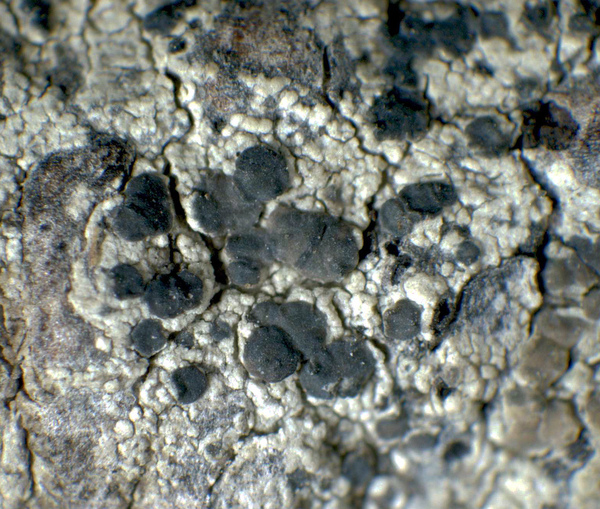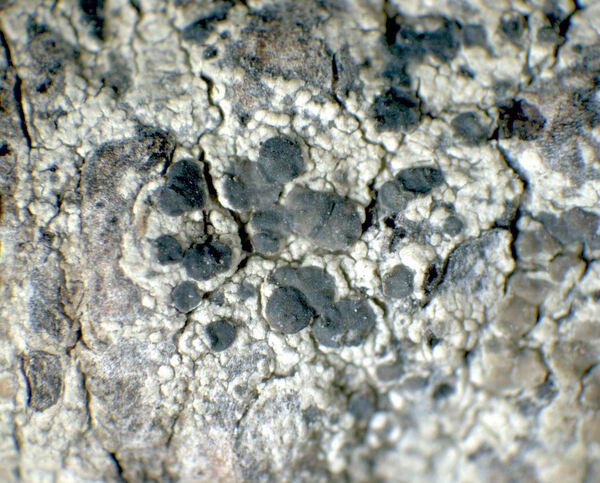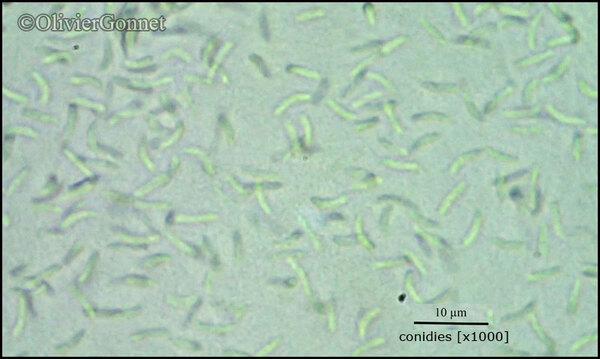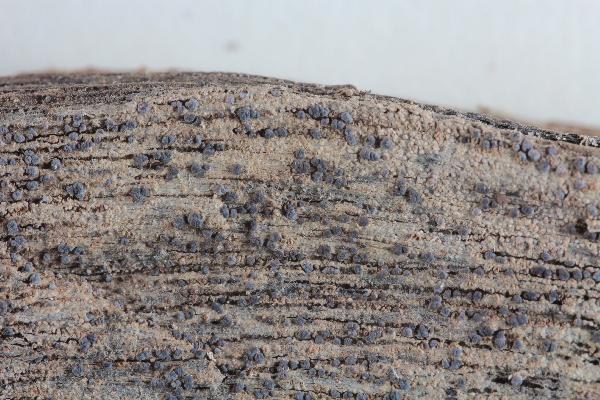Lecanoropsis sarcopidoides (A. Massal.) Ivanovich & Printzen
in Ivanovich & al., Phytotaxa, 695, 1: 40, 2025. Basionym: Biatora sarcopidoides A. Massal. - Ric. Auton. Lich. Crost.: 128, 1852.
Synonyms: Biatora pumilionis (Rehm) Oxner; Lecanora metaboliza Nyl.; Lecanora metaboloides Nyl.; Lecanora piniperda subsp. sarcopidoides (A. Massal.) Hedl.; Lecanora pumilionis (Rehm) Arnold; Lecanora sarcopidoides (A. Massal.) A.L. Sm.
Distribution: N - Frl (TSB 20607), Ven (Lazzarin 2000b, Nascimbene & Caniglia 2003c), TAA (Nascimbene & al. 2006e, 2007b, 2022, Nimis & al. 2015, van den Boom & Brand 2008), Lomb, Piem (Isocrono & al. 2004).
Description: Thallus crustose, endosubstratic to thinly episubstratic, continuous to areolate-warted, grey, grey-brown or pale yellowish brown, without a distinct prothallus, forming up to 4 cm wide patches, the areoles/warts c. 0.5 mm wide. Apothecia lecanorine, broadly appressed to sessile, (0.2-)0.4-0.6(-0.7) mm across, with a flat to strongly convex, bluish grey, sometimes pale to dark brown, often bluish-pruinose disc, and a thin, only initially prominent, smooth or crenulate, finally often excluded thalline margin concolorous with thallus or with disc. Thalline exciple corticate, the upper part brown, the cortex (15-)20-34(-39) µm wide laterally, (15-)22-27(-32) µm wide at base, the algal layer reaching the upper surface, with granules arranged in anticlinal rows; proper exciple sometimes present, colurless to faintly yellow-brown, 20-35 μm wide; epithecium colourless to faintly yellowish brown, N+ red to red-brown, with small and large (1-5 µm), colourless granules; hymenium colourless in lower part, reddish brown to blue-grey in upper part, (30-)35-40(-45) µm high; paraphyses simple to sparingly branched, (1-)1.5-2 µm thick at mid-level, the apical cells 2-3.5 μm wide, the apical gel sheath 3.5-5.5 μm wide; hypothecium colourless, 45-65(-75) µm high. Asci 8-spored, clavate, very thin-walled, with a K/I+ blue, tall tholus penetrated by a faintly amyloid apical cushion, the wall K/I-, surrounded by a blue outer layer, Lecanora-type. Ascospores 1-celled to 1-septate, hyaline, ellipsoid, (6-)7-9(-10) x (2.5-)3-3.6(-4.5) µm. Micropycnidia rare; microconidia bacilliform, 7-8 x 1-1.3 µm. Mesopycnidia common, immersed, pale brown around the ostiole; mesoconidia ellipsoid, 2.7-3.7(-4.1) x (1.1-)1.3-1.7 µm. Leptopycnidia very rare; leptoconidia thread-like, slightly to strongly curved, c. 19 x 0.7 µm. Photobiont chlorococcoid. Spot tests: thallus K-, C-, KC- or KC+ yellow, P- or P+ faintly yellow. Chemistry: pseudoplacodiolic acid (major), placodiolic acid (trace), usnic acid (trace).Note: a rather poorly known taxon found on acid bark, most often of conifers, and on lignum, mostly in upland areas. For further details see van den Boom & Brand (2008) and Ivanovich & al. (2025). The record from Mt. Vesuvius by Aprile & al. (2002), being dubious, is not accepted here.
Growth form: Crustose
Substrata: bark and lignum
Photobiont: green algae other than Trentepohlia
Reproductive strategy: mainly sexual
Poorly known taxon in need of further study
Commonnes-rarity: (info)
Alpine belt: absent
Subalpine belt: rare
Oromediterranean belt: absent
Montane belt: very rare
Submediterranean belt: absent
Padanian area: absent
Humid submediterranean belt: absent
Humid mediterranean belt: absent
Dry mediterranean belt: absent
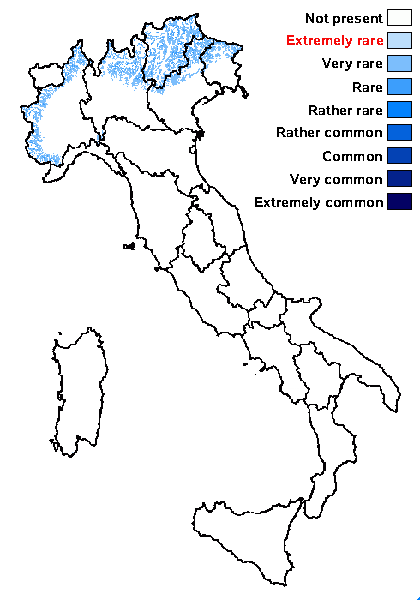
Predictive model
Herbarium samples

Courtesy Danièle et Olivier Gonnet - Source: https://www.afl-lichenologie.fr/Photos_AFL/Photos_AFL_L/Texte_L_4/Lecanora_sarcopidioides.htm
France, Névache, alt. 1780 m - Hautes-Alpes
131/05/2017
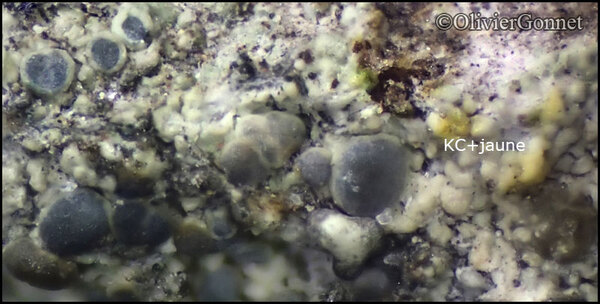
Courtesy Danièle et Olivier Gonnet - Source: https://www.afl-lichenologie.fr/Photos_AFL/Photos_AFL_L/Texte_L_4/Lecanora_sarcopidioides.htm
France, Névache, alt. 1780 m - Hautes-Alpes
131/05/2017
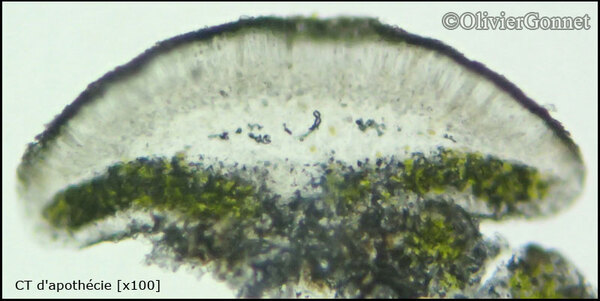
Courtesy Danièle et Olivier Gonnet - Source: https://www.afl-lichenologie.fr/Photos_AFL/Photos_AFL_L/Texte_L_4/Lecanora_sarcopidioides.htm
France, Névache, alt. 1780 m - Hautes-Alpes
131/05/2017
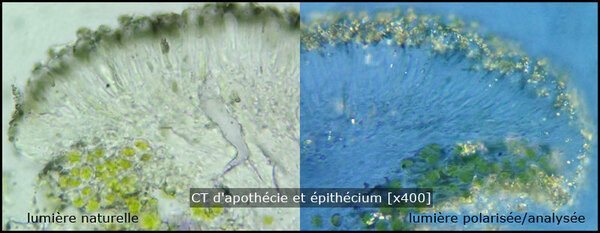
Courtesy Danièle et Olivier Gonnet - Source: https://www.afl-lichenologie.fr/Photos_AFL/Photos_AFL_L/Texte_L_4/Lecanora_sarcopidioides.htm
France, Névache, alt. 1780 m - Hautes-Alpes
131/05/2017
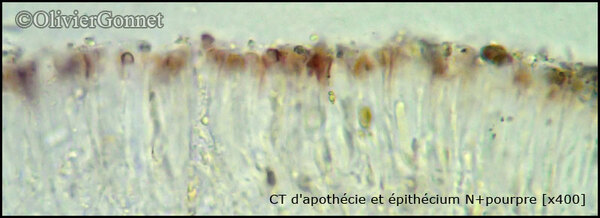
Courtesy Danièle et Olivier Gonnet - Source: https://www.afl-lichenologie.fr/Photos_AFL/Photos_AFL_L/Texte_L_4/Lecanora_sarcopidioides.htm
France, Névache, alt. 1780 m - Hautes-Alpes
131/05/2017
Growth form: Crustose
Substrata: bark and lignum
Photobiont: green algae other than Trentepohlia
Reproductive strategy: mainly sexual
Poorly known taxon in need of further study
Commonnes-rarity: (info)
Alpine belt: absent
Subalpine belt: rare
Oromediterranean belt: absent
Montane belt: very rare
Submediterranean belt: absent
Padanian area: absent
Humid submediterranean belt: absent
Humid mediterranean belt: absent
Dry mediterranean belt: absent

Predictive model
| Herbarium samples |

Courtesy Danièle et Olivier Gonnet - Source: https://www.afl-lichenologie.fr/Photos_AFL/Photos_AFL_L/Texte_L_4/Lecanora_sarcopidioides.htm
France, Névache, alt. 1780 m - Hautes-Alpes
131/05/2017

Courtesy Danièle et Olivier Gonnet - Source: https://www.afl-lichenologie.fr/Photos_AFL/Photos_AFL_L/Texte_L_4/Lecanora_sarcopidioides.htm
France, Névache, alt. 1780 m - Hautes-Alpes
131/05/2017

Courtesy Danièle et Olivier Gonnet - Source: https://www.afl-lichenologie.fr/Photos_AFL/Photos_AFL_L/Texte_L_4/Lecanora_sarcopidioides.htm
France, Névache, alt. 1780 m - Hautes-Alpes
131/05/2017

Courtesy Danièle et Olivier Gonnet - Source: https://www.afl-lichenologie.fr/Photos_AFL/Photos_AFL_L/Texte_L_4/Lecanora_sarcopidioides.htm
France, Névache, alt. 1780 m - Hautes-Alpes
131/05/2017

 DOLICHENS
DOLICHENS
